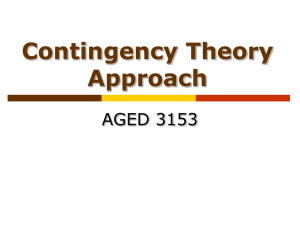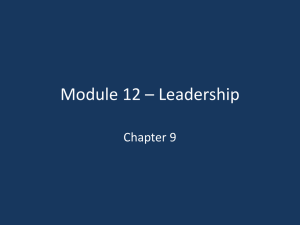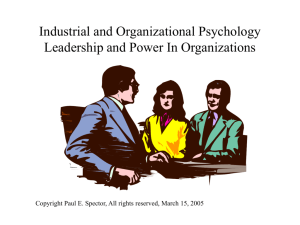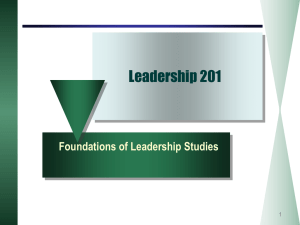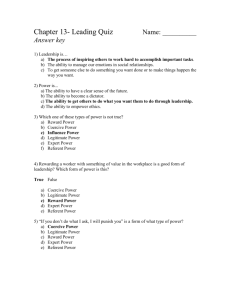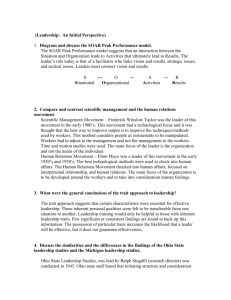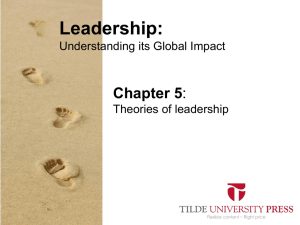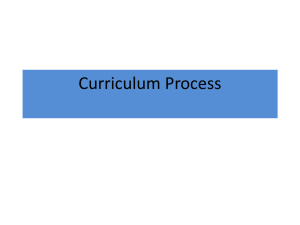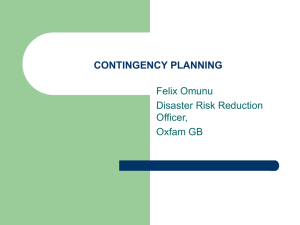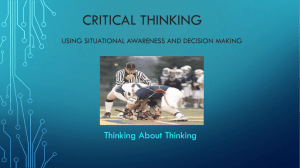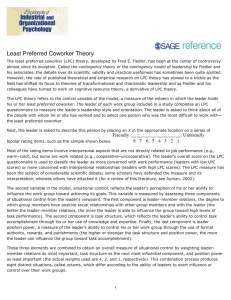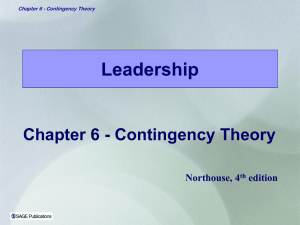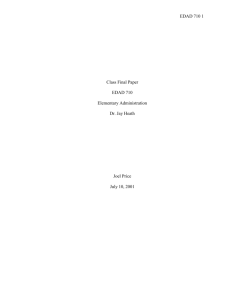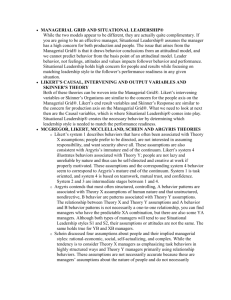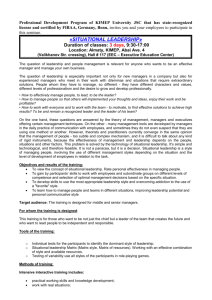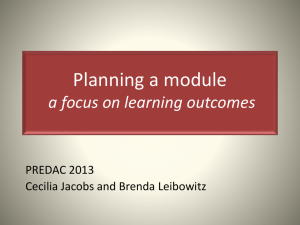Chapter 6 - Contingency
advertisement
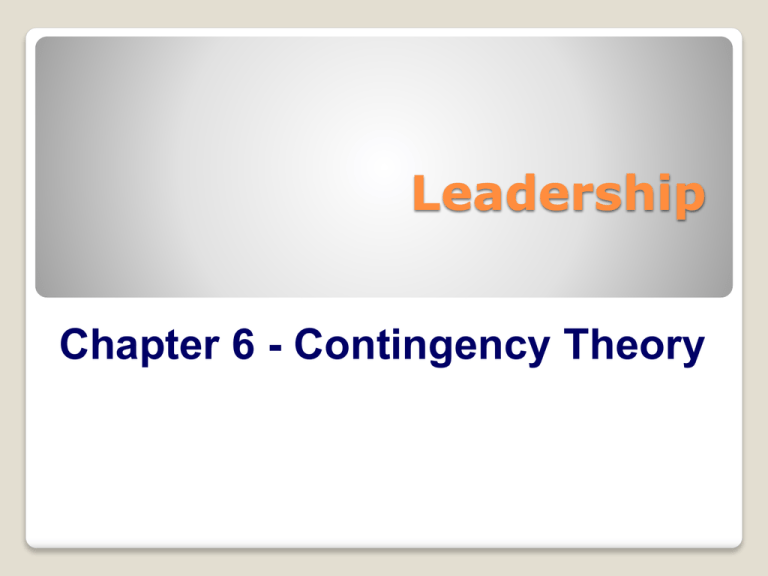
Leadership Chapter 6 - Contingency Theory Contingency Theory Approach Description Perspective Contingency theory is a leader-match theory (Fiedler & Chemers, 1974) ◦ Tries to match leaders to appropriate situations Leader’s effectiveness depends on how well the leader’s style fits the context Fiedler’s generalizations about which styles of leadership are best and worst are based on empirically grounded generalizations Contingency Theory Approach Description Definition Effective leadership is contingent on matching a leader’s style to the right setting Assessment based on: ◦ Leadership Styles ◦ Situational Variables Leadership Styles Leadership styles are described as: Task-motivated (Low LPCs) ◦ Leaders are concerned primarily with reaching a goal Relationship-motivated (High LPCs) ◦ Leaders are concerned with developing close interpersonal relationships Leader Style Measurement Scale (Fiedler) Least Preferred Co-Worker (LPC) Scale High LPCs = Relationship-motivated Low LPCs = Task-motivated Situational Variables/3 Factors 1. Leader-Member Relations - Refers to the group atmosphere and the degree of confidence, loyalty, and attraction of followers for leader Group atmosphere – Good – high degree of subordinate trust, liking, positive relationship Poor – little or no subordinate trust, friction exists, unfriendly Situational Variables/3 Factors 2. Task Structure ◦ Concerns the degree to which requirements of a task are clear and spelled out High Structure – ◦ requirements/rules - are clearly stated/known ◦ path to accomplish - has few alternatives ◦ task completion - can be clearly demonstrated ◦ limited number - correct solutions exist Situational Variables/3 Factors 2. Task Structure, cont’d. ◦ Concerns the degree to which requirements of a task are clear and spelled out Low Structure – ◦ requirements/rules - not clearly stated/known ◦ path to accomplish - has many alternatives ◦ task completion - cannot be clearly demonstrated/verified ◦ unlimited number - correct solutions exist Situational Variables/3 Factors 3. Position Power –Designates the amount of authority a leader has to reward or punish followers Strong Power – ◦ authority to hire or fire, give raises in rank or pay Weak Power – ◦ no authority to hire or fire, give raises in rank or pay Situational Variables/3 Factors 3 Factors - determine the favorableness of various situations in organizations Situations that are rated: –Most Favorable good leader-follower relations, defined tasks (high structure), & strong leader position power Situational Variables/3 Factors 3 Factors - determine the favorableness of various situations in organizations Situations that are rated: –Least Favorable Poor leader-follower relations, unstructured tasks (low structure), & Weak leader position power –Moderately Favorable – Fall in between these extremes Research Findings of Leader Style Effectiveness Reasons for leader mismatch ineffectiveness: Leader style doesn’t match a particular situation; stress and anxiety result Under stress, leader reverts to less mature coping style learned in earlier development Leader’s less mature coping style results in poor decision making and consequently negative work outcomes How Does the Contingency Theory Approach Work? Focus of Contingency Theory Strengths Criticisms Application Contingency Theory Approach Focus By assessing the 3 situational variables. After the nature of a situation is determined, the fit between leader’s style and the situation can be evaluated Overall Scope By measuring Leader’s LPC score and the 3 situational variables, it is possible to predict whether a leader will be effective in a particular setting Criticisms Fails to fully explain why leaders with particular leadership styles are more effective in some situations than others Criticism of LPC scale validity as it does not correlate well with other standard leadership measures Cumbersome to use in real-world settings Fails to adequately explain what should be done about a leader/situation mismatch in the workplace Based on the SLII and the Contingency Theory of Leadership, how should the following leaders behave to be most effective, what is your justification? Assigned by pairs. 20 minutes prep. Roger Goodell in with owners in the NFL labor dispute Jeff Saturday with players in the same dispute Think, Pair, Share Continued… Pete Caroll as a coach of the Seahawks Bubu Stewart as a leader in the motorcross circuit Lebron James as a leader of the defeated Miami Heat Think, Pair, Share Continued… Tim Tebow on the field as the second string quarterback fighting for first position. Manager Eric Wedge of the Seattle Mariners Dr. Jeff Stinson as the coach of his 7 year old son’s soccer team. Think, Pair, Share

